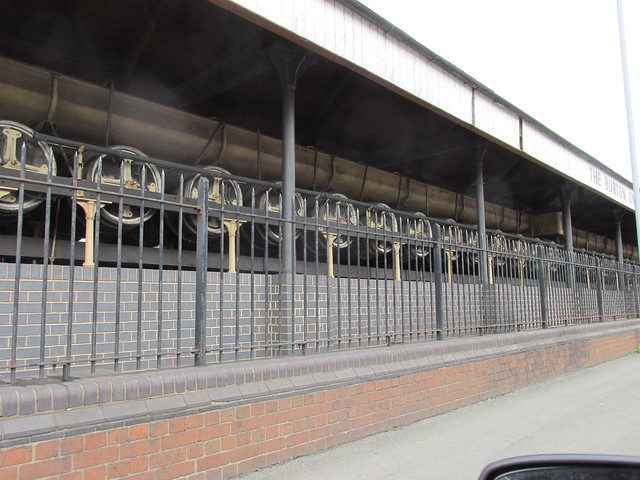Brewing beer has happened for about the last 8,000 years. Recipes have been found in Sumerian writings and Egyptian hieroglyphics, as well as regularly throughout history since.
In that time humankind has found many and varied ways to make a brew and there's even a museum devoted to it at the spiritual home of brewing, Burton-on-Trent in Staffordshire. It's worth a visit, if you're in the area, but even if you don't go in you can catch a few glimpses as you drive around the town.
Along one side of the museum car park, and conveniently next to a set of traffic lights that were red when we passed by, is an example of the Burton Union brewing system.
Breweries in Burton were traditionally known for using a system that allowed recirculation of the excess foam produced as yeast fermentation took place. (If you don't know the principles of brewing, see below.)
The yeast foam, known as barm, can take up a lot of space in a barrel. The Union system allowed foam to be transferred back through other barrels and beer to flow in to fill up the gap. So there were rows of barrels lying side by side, and linked with pipes, in the production area.
Marston's Pedigree is believed to be the last beer in commercial production using the Burton Union system.
The brewing process
Beer brewing involves steeping a source of starch (usually cereal grains) in water, then fermenting the resulting liquid with yeast. Different flavours and styles are created by means of other treatments, such as malting the grain (allowing it to begin germinating to increase sugar and starch levels) or adding hops. The resulting product can also be treated in a variety of ways such as conditioning in a cask or barrel, or adding fruit to the mix.


I remember when we first visited Burton to do some family history research in the library the smell of the beer making was in the air across the town. Isn't Marmite a by product from the industry? Fascinating post:)
ReplyDelete